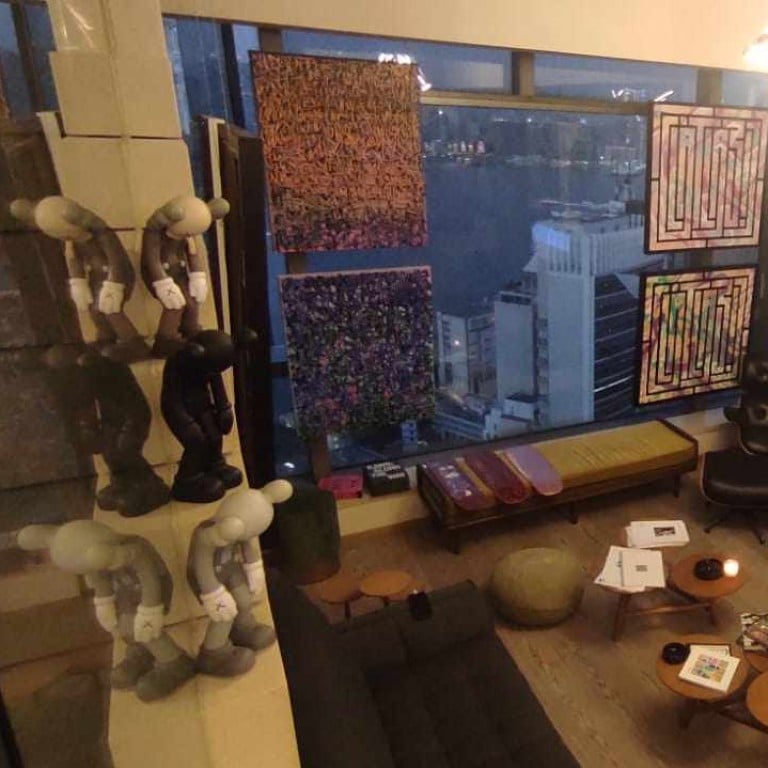How Hong Kong’s underground art scene broke overground: Banksy lit the fuse on a street art boom – now local talents are worth 10 times as much

Hong Kong’s underground art scene has been growing despite pandemic hardships – both from a business and creativity perspective. So says Jeremy Weltmann, anyway, who runs a successful contemporary street art gallery called TwentyCinco in Sheung Wan with his business partner Gil Bourgeois.
Weltmann, who has more than 30 years’ experience in the art industry and has done business in Europe, Africa, North America and Asia, recalled Hong Kong’s art scene being somewhat barren when he first arrived seven years ago.
“I was surprised when I first got here, there was no dynamism in the industry,” said Weltmann, who is also an avid art collector. “But slowly, over the past five years or so, we’ve seen more institutions come in, you see all the auction houses coming in and doing huge numbers, and I realised there’s been a huge change in the last few years. People are a lot more educated now than they used to be.”

But Hong Kong has and still does face the same problems of his native France, which is an overemphasis on well-known, centuries-old classical pieces, instead of paving the way forward for new, talented artists.
“We have a huge problem in France where we are too in love with our history, always living with things that have been built and done centuries ago,” explained Weltmann. “Living in the past can stop people from opening their minds to contemporary art.”
He believes Hong Kong’s lack of a contemporary art scene created a thirst among its people – particularly in the realm of street art, which has been one of the most lucrative artforms in the past two decades, with well-known talents like Banksy selling pieces for over US$20 million.
Weltmann and Bourgeois’ modus operandi for the past several years has been to create a platform for lesser known but talented street artists, and help educate gallery guests on the business side of art collection. Weltmann said the value of fine art as an asset class has ballooned despite Covid-19. He believes the art business, especially in Hong Kong, is far more lucrative than people outside the industry realise.
“Of course I want to make money through my gallery – I am not a philanthropist,” he said.
“But still, I believe the responsibility of a gallerist is to discover new talents, to help existing artists and to encourage art and have the industry move forward. We don’t worry as much about the institutional side of things.”

TwentyCinco collaborates with around one artist per month, and can take up to a year to put exhibitions together. Because the process is so intimate, Bourgeois and Weltmann spend a tremendous amount of time getting to know the artist before agreeing on a collaboration.
In the end, the gallery ends up selling around 70 per cent of the pieces through online purchases and private viewings, and the rest get bought during the public viewings. Weltmann said this process also teaches the artists to become more business savvy, and their average quotation price goes up drastically. Some of his artists’ pieces have sold for more than US$1 million, though he often helps their average price per piece increase from US$5,000-10,000 to US$50,000-100,000.
Weltmann said the pandemic’s greatest challenge is the travel restrictions, which made it more difficult to collaborate with international artists. However, this has opened the door for the gallery to feature more local artists.
“Generally, we don’t care where an artist comes from. We want to share an artist because we believe in him and his work. That being said, we are in Hong Kong, and we really wish to meet more artists from here, and there are a lot of talented people here whose work I really like.”
He is optimistic about the future of Hong Kong art, adding: “I think there are a lot of new things to explore now. I see new art galleries opening all over the city and I see a lot of new people at these openings every time.
“Hong Kong people are curious – they are cultural – and I think we will see them take more of an interest in art over the next few years.”

- Despite travel restrictions, Hong Kong’s art industry is booming, with growing interest in both international and local works – and especially street art
- More auction houses are coming in, while Sheung Wan’s edgy TwentyCinco gallery is helping artists become acquainted with the business side of things